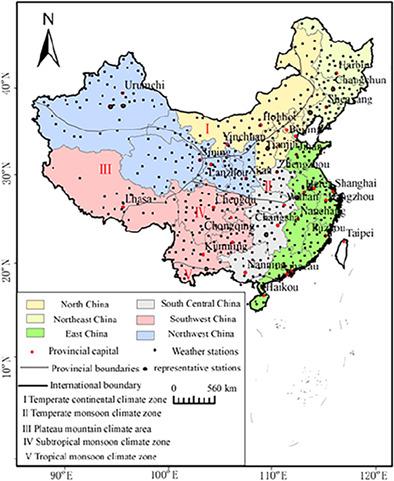当前位置:
X-MOL 学术
›
Int. J. Climatol.
›
论文详情
Our official English website, www.x-mol.net, welcomes your feedback! (Note: you will need to create a separate account there.)
Response relationship between the abrupt temperature change-climate warming hiatus and changes in influencing factors in China
International Journal of Climatology ( IF 3.9 ) Pub Date : 2021-04-02 , DOI: 10.1002/joc.7123 Xing Huang 1 , Long Ma 1 , Tingxi Liu 1 , Bolin Sun 1 , Yang Chen 1 , Zixu Qiao 1 , Longteng Liang 1
International Journal of Climatology ( IF 3.9 ) Pub Date : 2021-04-02 , DOI: 10.1002/joc.7123 Xing Huang 1 , Long Ma 1 , Tingxi Liu 1 , Bolin Sun 1 , Yang Chen 1 , Zixu Qiao 1 , Longteng Liang 1
Affiliation

|
The mechanism of the abrupt temperature change-climate warming hiatus is not clear, and understanding the response relationships between it and the influencing factors is significant to the study the mechanism. Based on the annual average temperature (Tave), annual average minimum temperature (Tmin), and annual average maximum temperature (Tmax) of 622 meteorological stations in China from 1951 to 2018, the response relationships between the three temperatures and the influencing factors were analyzed. The results showed that In the periods before, during, and after an abrupt temperature change, For the abrupt changes in the three temperatures, the regions significantly influenced by the solar radiation (SR), AMO, multivariate El Niño southern oscillation (ENSO) index (MEI), and Pacific Decadal Oscillation (PDO) accounted for more than 80% of China, and for the abrupt changes in Tmin, the regions with significant influences covered the whole of China. The regions significantly influenced by the AO accounted for more than 60% of China, and the regions significantly influenced by the remaining factors accounted for more than 30% of China. The AO mainly influenced the abrupt temperature change in the northern regions, the AGG and CO2 mainly influenced all the regions except for Northeast China, and the influencing scopes of the atmospheric pressure (AP) were relatively small and not concentrated. In summary, when some conditions continued for a period and a tendency rate or value was reached, abrupt temperature change occurred, and the conditions were as follows: the AGG continued to increase, the PDO was in a positive phase, the AMO and SR continued to rise, the MEI changed abruptly, and the AP in each zone continued to decline/increase and experienced the subsequent trend change. In the periods before, during, and after the climate warming hiatus, few influencing factors had a significant correlation with the temperatures. The MEI and PDO influenced more than 80% of the regions that experienced the climate warming hiatus, and other factors influenced less than 60% of these regions. In the 1990s, especially after 1998, the increase in the AGG slowed, the PDO declined or was in a negative phase, the MEI and SR decreased, and the AP in each zone continued to decline/increase and experienced the subsequent trend change; when those conditions continued for a period and a tendency rate or value was reached, the climate warming hiatus occurred. The abrupt temperature change-climate warming hiatus was the result of the joint action of multiple influencing factors.
更新日期:2021-04-02


























 京公网安备 11010802027423号
京公网安备 11010802027423号